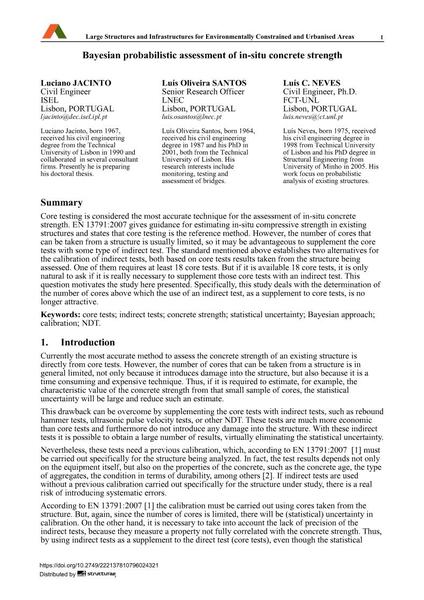Bayesian probabilistic assessment of in-situ concrete strength

|
|
|||||||||||
Détails bibliographiques
| Auteur(s): |
Luciano Jacinto
Luís Oliveira Santos Luís C. Neves |
||||
|---|---|---|---|---|---|
| Médium: | papier de conférence | ||||
| Langue(s): | anglais | ||||
| Conférence: | IABSE Symposium: Large Structures and Infrastructures for Environmentally Constrained and Urbanised Areas, Venice, Italy, 22-24 September 2010 | ||||
| Publié dans: | IABSE Symposium Venice 2010 | ||||
|
|||||
| Page(s): | 228-229 | ||||
| Nombre total de pages (du PDF): | 7 | ||||
| Année: | 2010 | ||||
| DOI: | 10.2749/222137810796024321 | ||||
| Abstrait: |
Core testing is considered the most accurate technique for the assessment of in-situ concrete strength. EN 13791:2007 gives guidance for estimating in-situ compressive strength in existing structures and states that core testing is the reference method. However, the number of cores that can be taken from a structure is usually limited, so it may be advantageous to supplement the core tests with some type of indirect test. The standard mentioned above establishes two alternatives for the calibration of indirect tests, both based on core tests results taken from the structure being assessed. One of them requires at least 18 core tests. But if it is available 18 core tests, it is only natural to ask if it is really necessary to supplement those core tests with an indirect test. This question motivates the study here presented. Specifically, this study deals with the determination of the number of cores above which the use of an indirect test, as a supplement to core tests, is no longer attractive. |
||||
